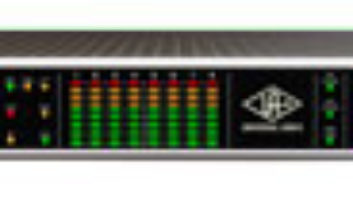As I discussed in the last issue, the topic of IC op amp upgrades generates many questions. But those in search of answers may find what they seek by getting an oscilloscope and learning how to use it. This month, I’ll examine one example of what can happen during the upgrade process. However, there are a few caveats before getting started. Be safe! Experiment at your own risk. We don’t want any blown tweeters or fried electronics. And most of all, we want you back next month.
FIRST ENCOUNTER
On outward glance, Trident’s single-rackspace stereo limiter compressor looks a like a satellite module from the company’s Series 80 console. Dated 1979, the schematic is filled with 10 MP741CP op amps, five per channel. When I last met one of these a few weeks back, two ICs in the signal path (per channel) were upgraded to Burr Brown OP132 op amps. The four new chips consumed nearly three times the current, translating to 11 milliAmps (mA) more than the power supply was designed to deliver. The schematic in Fig. 1 shows the original bipolar 16-volt power supply.
Trident’s power transformer has two primaries and a switch for 110- or 240-volt operation. It also has two secondary windings that are wired in series, and the jumper between the two typically becomes the center “tap” for a bipolar supply and wired to ground. In this case, the unit is wired exactly as it looks, relying on the zener diodes to create a virtual center; aka, the 0V reference.
CONVERSION 101
AC is converted to DC via diode bridge “REC 70.” Capacitors C27 and C28 do the filtering, followed by two resistors — R53 and R54 — and a pair of zener diodes in the “shunt” regulator configuration. (Earlier versions of the UREI 1176 have a single-ended version of this supply.) Diodes ZD1 and ZD2 are type BZXC16, not an easy European part to cross-reference, but the number 16 conveniently corresponds to the clamping voltage. As you can see in Fig. 1, the drop across each resistor is 5 volts, allowing the calculation I = V/R = 5/120 = 41 mA — the total current required by the zeners, the op amps and support circuitry. All supply caps were previously upgraded to Panasonic’s HFC Series (designed for switching power supplies and rated for 105° C): Overkill perhaps, but long-lasting and effective.
The 741 op amp (running on bipolar 16V) consumes 1.5 mA per leg, 15 mA total for the 10 chips. An ammeter on the support circuitry — the printed circuit board (PCB) without op amps — measured 20 mA for the positive rail and 25 mA for the negative rail, which is 35 mA and 40 mA, respectively, with stock ICs. While the positive rail had 6mA headroom for the zener, the negative rail was within 1 mA of the calculated 41mA total — and that’s without a signal. With the four OPA132 op amps installed, the negative rail was sagging at -13 volts (in parentheses in Fig. 1), making it impossible to bias the FET. (That’s another article.) Translation: Regulation is barely possible with the original parts, let alone an upgrade.
The solution turned out to be pretty simple. In Fig. 2, the resistors are replaced with 15V “linear” regulator ICs — 7815 and 7915 — and the zeners were removed. Fortunately, the linear regulators are more efficient than the shunt regulators because there was a chance that the extra load might have been too much for the transformer. In the meter circuit and sidechain driver, an additional pair of 741s were upgraded to 5534s (four total). Even this additional load was no sweat once the power supply had ample reserve. The regulators do not require heat sinks, and the transformer runs cool.
RADIO DAZE
All this time, there were no oscillation problems among the eight upgraded ICs until an ammeter was inserted to measure the current. Prior to that test, there was less than 12 inches of cabling between the power supply and the main PCB, a short enough distance to keep resistance low. The meter cables added six feet in total, allowing the chips to reflect backwash into the now-spongy power rails and communicate among themselves. It was the very type of problem that could cause a false sense of security: no oscillation until the peak-to-peak signal approached the maximum output level before clipping. That’s why an oscilloscope is such an essential tool.
As an added security measure, power supply decoupling caps were installed from the power pins of the two outputs to ground. These chips supply all of the post-processing make-up gain. Figure 3 details how 0.1µF ceramic-disc caps can be installed from the power pins to ground on what was formerly an RC4136 quad op amp (now a pair of OPA2604s) on the UREI LA-4. Depending on the PCB layout, the number and type of chips, cap values up to 10µF are typically applied.
Visit Eddie at
www.tangible-technology.com
for more details on this mod, op amp swaps and much more.


